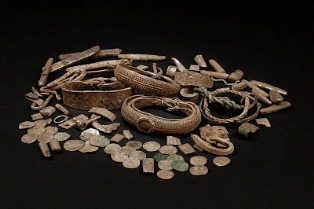Yealand Redmayne
![]()
![]()
Yealand Redmayne
Yealand Redmayne shares a wooded limestone ridge with Yealand Conyers, its neighbour to the south. Redmayne and Conyers were the family names of medieval overlords who ran the two estates. The name Yealand probably comes from the Anglo Saxon word “geah-land” meaning steep- or high-land.
While Yealand Conyers is dominated by gentlemens’ residences, Yealand Redmayne is characterised by a string of traditional, stone-built farmhouses and cottages which line Silverdale Road, facing narrow strips of farmland. Storrs Farm dates from 1666 while Brow Foot Farm, in Yealand Storrs has a datestone from 1627.
Another of the older farms, Hill Top in the centre of the village, has an unusual spiral staircase and the remains of a communal oven. Some local traditions suggest this was the home of Redmayne’s most famous son, the Quaker activist and writer Richard Hubberthorne (d. 1662). An officer in Cromwell’s New Model Army, Hubberthorne was a close friend to George Fox, the founder of the Quakers. The two men debated religious doctrine with King Charles II in 1660 . But Hubberthorne was later arrested for his views and he died in Newgate prison in 1662.
The earliest evidence of human occupation in the parish was retrieved from Storrs Moss, in neighbouring Yealand Storrs, during the 1960’s. Archaeologists from Liverpool University unearthed a structure of socketed wooden planks – probably a causeway – preserved in the peat at the edge of the Moss. They also found pieces of flint and fragments of a wooden bowl. The oldest remains were dated to around 4,200 BC, the end of the Mesolithic period. Local farmers Jack Seed and his daughter Alice,from Browfoot Farm frequently discovered Stone Age tools while ploughing fields alongside the Moss. Most are now kept by Kendal Museum.
 A Stone Age arrowhead discovered by farmer Jack Seed when ploughing near the Moss.
A Stone Age arrowhead discovered by farmer Jack Seed when ploughing near the Moss.
In the woods above Yealand, the picturesque Deepdale Pond was a popular site for picnics up until the First World War. But shock waves from an explosion at the White Lund munitions factory in Lancaster in 1917 are believed to have opened new fissures in the limestone, causing the water to drain away. The pond is now a bog.
A plaque on the wall of Yealand School explains that it was founded in 1841. During World War II the village name on the plaque was painted over to thwart German paratroopers who might have needed to check their location.
Yealand Hall , in the neighbouring hamlet of Yealand Storrs, is said to date back to Tudor times. Until recently it was home to Sir Ernest Sanderson “Sandy” Temple, a former circuit judge and landowner who was often to be seen driving around the village in a carriage pulled by a zonkey – a zebra-donkey cross.
Lumps and bumps in the field above Brow Foot Farm have prompted speculation that it is the location of a deserted village, possibly abandoned during the Black Death in the fourteenth century. The site has not yet been excavated.

The hoard of Viking coins and jewellery unearthed in 2011
The third biggest haul of Viking coins and jewellery ever discovered in England was unearthed by a metal-detectorist in the parish of Yealand in 2011. The find was quickly dubbed the Silverdale Hoard to put treasure hunters off the scent.
